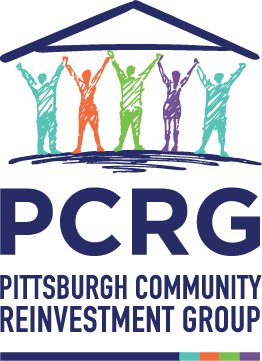2021 MORTGAGE LENDING STUDY
The Pittsburgh Community Reinvestment Group’s Annual Mortgage Lending Study provides a current portrait of mortgage lending trends in Allegheny County and the City of Pittsburgh. PCRG prepares this study using publicly available data designed to monitor the performance of financial institutions seeking to meet their community investment requirements under the Community Reinvestment Act (CRA). The goal of publishing these findings is the ensure that policymakers and community members can better access the wealth of publicly available data to better understand the state of lending in Pittsburgh.
PCRG RESEARCH
Reinvesting in Pittsburgh’s Neighborhoods: the Case For Transit Oriented Development (June, 2011)
As more and more cities join the transit space race and see the benefits of mode shift, places like Pittsburgh – which already have well established systems and walkable street patterns– need to revisit and reinforce their existing transit networks in order to stay competitive. Long thought of as a planning concept for managing growth in fast growing regions, transit-oriented development actually has great applicability when it comes to reinforcing the neighborhoods that make mature cities great. This report provides the “why” – why TOD makes so much sense in Pittsburgh from an economic, social, and quality of life perspective and what those key qualities to TOD are that we should start advancing.
Working with a statewide panel of planners, developers, financiers, and community leaders, PCRG commissioned this report to assess the effectiveness of Pennsylvania’s Transit Revitalization Investment District (TRID) legislation as a financing tool for revitalization of core communities across the state. To date, 14 TRIDs have been initiated around the state with none of them actually utilizing the financing mechanism provided by the legislation. Transit remains a powerful revitalization tool – especially in places that were originally built around transit – and tools such as TRID can unlock urban environments to revitalization opportunities that make them once again viable and sustainable for a new generation of residents.
Local/Regional Planning Document Scan
20/20 Regional Transit Vision by the Southwestern Pennsylvania Commission (SPC) identifies mass-transit options that would support growth and connect people to recreation, economic and employment centers throughout SPC’s 10-county region. Full report (21.5MB) available here.
The Eastern Corridor Transit Study (ECTS) (13.5MB), another SPC report that identifies an array of transportation improvements to address the mobility needs of the corridor’s residents, employees, businesses and visitors.
The Transitional Analysis was intended to advance the results of the ECTS toward implementation of one or more transit investments.
The 2035 Transportation and Development Plan, otherwise known as Project Region, is the SPC’s mechanism for coordinating and implementing transportation resources. This plan feeds into the Long-Range Development Plan (LRDP) and Transportation Improvement Plan (TIP) for the 10-county region.
Transportation component of the Allegheny County Comprehensive Plan,otherwise known as “Allegheny Places.”
Port Authority of Allegheny County Transit Development Plan final presentation
Position Papers – Making the Case
Realizing the Potential for Sustainable and Equitable TOD (2009). In June 2009, the Obama Administration announced a new interagency partnership on sustainable communities between the Department of Transportation, HUD and the EPA. Reconnecting America released this white paper to help inform the work of the Partnership. The paper reflects input from a variety of stakeholders involved in transit-oriented development, affordable housing and community development, and outlines four key policy recommendations that could be implemented over the next year. Download white paper here.
Using Land Use Policy to Address Congestion: The Importance of Destination in Determining Transit Share (2003). This paper argues that to reduce congestion through increased transit use policy-makers should focus on increasing the size of downtowns, and on developing downtown-like centers in suburban locations. Download report here.
Capturing the Value of Transit (2008). “Value capture,” a concept in which the increased value that a transit asset has on the surrounding property, is increasingly discussed as a tool to leverage new transit investment. This report explores where the value comes from, the best way to measure it, and, most importantly, the best way to capture it. Download report here.
Best-Practice Planning from Other Regions
Policy and Legislation – Local, State, and Federal
Act 238 of 2004, Pennsylvania’s Transportation Revitalization Investment District (TRID) Act, provided funding that enables municipalities to study the best ways of creating housing and retail development near public transit lines.
Pennsylvania Community Transportation Initiative (PCTI) is PennDOT’s plan to fund qualifying smart transportation programs. These are based upon ten themes, and a guidebook was also developed for the initiative. PCTI projects should aim to achieve the following goals:
support local development projects and encourage walkable, mixed use developments;
enhance and utilizing the existing transportation network infrastructure; and
improve regional connectivity and support transit oriented and brownfield developments.
Local/Regional Planning Agencies
City of Pittsburgh, Department of City Planning (DCP). The Department of City Planning sets the framework for the City’s development through policy and development review by the Planning Commission and through administration of the zoning ordinance.
Southwestern PA Commission (SPC), the Federally-designated Metropolitan Planning Organization (MPO) for the 10-county region surrounding Pittsburgh, is responsible for planning and prioritizing the use of all state and federal transportation funds allocated to the region. Its 55-member Board of Directors utilizes the resources of the Southwestern Pennsylvania Corporation – a separate 501(c)3 agency charged with the actual analysis of projects and regional trends – to inform these decisions.

